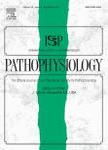版权所有:内蒙古大学图书馆 技术提供:维普资讯• 智图
内蒙古自治区呼和浩特市赛罕区大学西街235号 邮编: 010021

作者机构:Laboratory for Reproductive Biology and Developmental Programming Department of Physiology Edo University Iyamho Edo State Nigeria Department of Physiology Bingham University Karu Nasarawa State Nigeria Department of Human Anatomy Rivers State University Port Harcourt Nigeria School of Medicine and Allied Health Sciences University of the Gambia Gambia Institute of Chemical and Biotechnology Vaal University of Technology Southern Gauteng Science and Technology Park Sebokeng South Africa Reproductive Biomedicine and Natural Product Lab Department of Zoology University of Rajasthan Jaipur 302004 India
出 版 物:《Pathophysiology》 (Pathophysiology)
年 卷 期:2019年第26卷第3-4期
页 面:331-341页
学科分类:0710[理学-生物学] 1002[医学-临床医学] 1001[医学-基础医学(可授医学、理学学位)] 10[医学]
主 题:Androgen receptor gene Biochemical DHEA PCOS Vitamin C Wistar rats
摘 要:Background: Polycystic ovary syndrome (PCOS), also known as the Stein-Leventhal syndrome is one of the most common causes of anovulation, infertility and hyperandrogenism in women, affecting between 5–10 % of women of reproductive age (12–35 years) worldwide. Despite substantial effort to define the cause of PCOS, its pathophysiology remains poorly understood. Consequently, determining the mechanisms of PCOS and the possible treatment is the major goal of medical research in endocrine and reproductive physiology. Aim: To investigate the mechanism of ovarian metabolic changes in dehydroepiandrosterone (DHEA)-induced polycystic ovary in Wistar rats treated with vitamin C. Methods: Twenty-eight immature female Wistar rats weighing (16–21 g) were randomly divided into four groups (n = 7/group): group I served as control and was given water, group II were injected with DHEA (6 mg/100 g in 0.2 ml corn oil subcutaneously to induce PCOS condition), group III received 150 mg/kg BW of Vitamin C orally, group IV were co-administered with 6 mg/kg BW DHEA in 0.2 ml of corn oil subcutaneously and 150 mg/kg BW of Vitamin C orally. All treatments lasted for 15 days. Twenty-four hours after the last administration, the rats were sacrificed by cervical dislocation. Blood samples and ovaries were collected for reproductive hormonal analysis, biochemical and histopathological analysis. The expressions of mRNA androgen receptor gene in the ovary were determined by real-time reverse transcriptase polymerase chain reaction. All data were analysed using one-way ANOVA. Results: There was a significant decrease (p 0.05) in the antioxidant and metabolic enzyme activity in the DHEA treated group compared with the control group. DHEA co-administration with Vitamin C showed a significant decrease in Malondialdehyde, cytokines and Estrogen and a significant increase (p 0.05) in antioxidant and metabolic enzymes compared with DHEA treated group only. The histopathological evaluation demonstrat